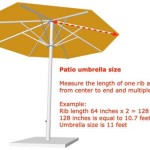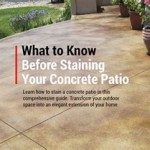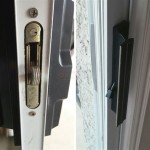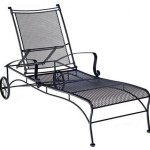How Do You Clean Patio Cushions?
Patio cushions provide comfort and aesthetic appeal to outdoor living spaces. However, exposure to the elements, including sunlight, rain, dirt, and mildew, inevitably leads to the accumulation of grime and stains. Regular cleaning is essential to maintain their appearance, prolong their lifespan, and prevent the growth of harmful mold and bacteria. The frequency and method of cleaning depend on the type of fabric, the severity of the soiling, and the presence of specific stains.
This article outlines a comprehensive guide to cleaning patio cushions, covering various cleaning methods and preventative measures to keep them looking their best.
Understanding Your Patio Cushion Material
Before embarking on any cleaning process, identifying the material of your patio cushions is paramount. Different fabrics require different cleaning approaches. Ignoring this factor can lead to damage, discoloration, or shrinkage. Common materials used for patio cushions include:
- Polyester: A synthetic fabric known for its durability, water resistance, and resistance to fading. Polyester is relatively easy to clean and can withstand various cleaning agents.
- Acrylic: Another synthetic fabric known for its excellent colorfastness, resistance to mildew, and weather resistance. Acrylic fabrics are often used in high-end patio furniture.
- Olefin: A lightweight, colorfast, and stain-resistant synthetic fabric. Olefin is a good option for outdoor cushions exposed to direct sunlight.
- Cotton: A natural fiber that is comfortable and breathable but prone to fading, water absorption, and mildew growth. Cotton cushions require more frequent cleaning and protection from the elements.
- Canvas: A durable and tightly woven fabric, often made from cotton or linen. Canvas is relatively water-resistant but can still be susceptible to mildew if not properly treated.
The care label on the cushion should provide specific cleaning instructions. If the label is missing or illegible, it is advisable to err on the side of caution and use gentle cleaning methods. Testing a small, inconspicuous area of the cushion with the chosen cleaning solution before applying it to the entire surface is always recommended.
Regular Maintenance for Patio Cushions
Consistent maintenance is crucial to minimizing the need for intensive cleaning. Simple habits can significantly extend the life of patio cushions and keep them looking fresh.
- Brushing: Regular brushing with a soft-bristled brush helps remove loose dirt, debris, and pollen before they become embedded in the fabric. A weekly brushing is generally sufficient for cushions exposed to average amounts of dirt.
- Vacuuming: Vacuuming cushions with an upholstery attachment removes dust, crumbs, and pet hair that brushing may miss. Vacuuming is particularly useful for cushions with textured surfaces.
- Spot Cleaning: Addressing spills and stains immediately prevents them from setting and becoming more difficult to remove. Blot the spill with a clean cloth or paper towel, working from the outside inward to avoid spreading the stain. Avoid rubbing the stain, as this can push it deeper into the fabric.
- Water Repellency: Applying a fabric protector spray designed for outdoor use can enhance the water repellency of the cushions, making them less susceptible to stains and mildew. Reapply the spray periodically, following the manufacturer's instructions.
- Storage: When not in use, consider storing patio cushions in a dry, sheltered area, such as a shed, garage, or covered patio. This protects them from the elements and reduces the risk of mildew growth and fading. If storage is not possible, covering the cushions with waterproof covers provides a similar level of protection.
Deep Cleaning Methods for Patio Cushions
Despite regular maintenance, deep cleaning may be necessary to remove stubborn stains, mildew, or accumulated grime. Several deep cleaning methods can be employed, depending on the type of fabric and the severity of the soiling.
- Mild Soap and Water: This is the gentlest cleaning method and is suitable for most patio cushion fabrics. Mix a small amount of mild dish soap or laundry detergent with warm water. Apply the solution to the cushion using a sponge or soft cloth, working in a circular motion. Rinse thoroughly with clean water and allow the cushion to air dry completely.
- Vinegar Solution: Vinegar is a natural cleaning agent that can effectively remove mildew and odors. Mix equal parts white vinegar and water in a spray bottle. Spray the affected area, allow it to sit for 15-20 minutes, and then scrub gently with a soft brush. Rinse thoroughly with clean water and allow the cushion to air dry completely. The vinegar smell will dissipate as the cushion dries.
- Enzyme Cleaners: Enzyme cleaners are specifically formulated to break down organic stains, such as food spills, pet messes, and mildew. These cleaners can be particularly effective for removing stubborn stains that other methods may not address. Follow the manufacturer's instructions carefully, and always test the cleaner on a small, inconspicuous area before applying it to the entire cushion.
- Oxygen Bleach: Oxygen bleach, also known as sodium percarbonate, is a gentler alternative to chlorine bleach and can be used to brighten white or light-colored cushions. Mix oxygen bleach powder with warm water according to the manufacturer's instructions. Apply the solution to the cushion and allow it to sit for several hours or overnight. Rinse thoroughly with clean water and allow the cushion to air dry completely. Oxygen bleach is generally safe for most fabrics, but testing a small area first is still recommended.
- Pressure Washing: While pressure washing can be an effective way to remove dirt and grime from patio cushions, it should be used with caution. The high pressure can damage delicate fabrics or force water into the cushion's interior, leading to mildew growth. If using a pressure washer, use a wide nozzle setting and maintain a safe distance from the cushion. Immediately after pressure washing, allow the cushion to dry thoroughly in the sun.
Addressing Specific Stains on Patio Cushions
Different types of stains require different cleaning approaches. Using the appropriate method can significantly improve the chances of successful stain removal.
- Mildew: Mildew is a common problem for patio cushions, especially in humid environments. To remove mildew, mix equal parts white vinegar and water in a spray bottle. Spray the affected area, allow it to sit for 15-20 minutes, and then scrub gently with a soft brush. Rinse thoroughly with clean water and allow the cushion to air dry completely in direct sunlight. Sunlight is a natural disinfectant and can help kill any remaining mildew spores. For stubborn mildew stains, a solution of oxygen bleach and water may be necessary.
- Food and Drink Spills: Address food and drink spills immediately by blotting the area with a clean cloth or paper towel. Avoid rubbing the stain, as this can push it deeper into the fabric. For grease stains, sprinkle baking soda or cornstarch on the stain to absorb the grease. Allow it to sit for 30 minutes, then vacuum it up. Follow with a mild soap and water solution. For colored drink stains, such as wine or juice, try using a solution of club soda or a stain remover specifically designed for these types of stains.
- Bird Droppings: Bird droppings can be corrosive and should be removed as soon as possible. Scrape off any dried droppings with a dull knife or spatula. Then, clean the area with a mild soap and water solution. Rinse thoroughly with clean water and allow the cushion to air dry completely.
- Sunscreen: Sunscreen stains can be difficult to remove, as they often contain oils that can penetrate the fabric. To remove sunscreen stains, pretreat the area with a stain remover specifically designed for oil-based stains. Allow the stain remover to sit for the recommended time, then wash the cushion according to the fabric's care instructions.
- Mold: Mold differs from mildew. Mold is a fungus that comes in more colors and is often thicker in appearance. To remove mold, follow similar advice to that of the mildew stain with a solution of oxygen bleach and water. If the mold is already bad, then the best option might be to replace the cushions entirely.
Drying Patio Cushions Properly
Proper drying is essential to prevent mildew growth and ensure the longevity of patio cushions. Avoid placing cushions in a dryer, as the high heat can damage the fabric and cause shrinkage. Instead, allow the cushions to air dry completely in a well-ventilated area. Direct sunlight can help kill any remaining bacteria or mildew spores, but prolonged exposure to direct sunlight can also cause fading. Rotate the cushions periodically to ensure even drying.
Vertical drying is preferable to laying the cushions flat, as it allows air to circulate more freely. If possible, prop the cushions up against a wall or railing. Before storing the cushions, ensure that they are completely dry, inside and out. This may take several days, depending on the weather conditions and the thickness of the cushions.
Preventative Measures to Minimize Cleaning Needs
Beyond regular maintenance and prompt stain removal, several preventative measures can be taken to minimize the need for frequent and intensive cleaning.
- Protective Covers: Using waterproof cushion covers can provide an extra layer of protection against the elements and spills. Choose covers made from breathable fabrics to prevent moisture buildup and mildew growth.
- Strategic Placement: Positioning patio furniture in a sheltered area, such as under an awning or umbrella, can reduce exposure to sunlight, rain, and debris.
- Regular Inspections: Inspecting cushions regularly for signs of dirt, stains, or mildew allows for early intervention and prevents problems from escalating.
- Fabric Protection Sprays: Regularly apply fabric protection sprays designed for outdoor use to enhance water repellency and stain resistance. Choose a spray that is compatible with the cushion's fabric and follow the manufacturer's instructions carefully.
By understanding the different types of patio cushion materials, implementing regular maintenance practices, employing appropriate cleaning methods, and taking preventative measures, you can maintain the beauty and longevity of your outdoor cushions, ensuring a comfortable and enjoyable outdoor living space.

How To Clean Patio Cushions The Easy Way Addicted 2 Diy

Clean Outdoor Cushions Save Top Tips

The Best Ways To Clean Your Cushions And Slipcovers Patio Furniture Cushion Covers

How To Clean Outdoor Cushions And Scentsible

How To Clean Outdoor Cushions

How To Clean Patio Furniture And Scentsible

To Clean Outdoor Patio Furniture Cushions Treat Them Like A Rug Wirecutter

How To Clean Outdoor Cushions And Remove Stains Bob Vila

To Clean Outdoor Patio Furniture Cushions Treat Them Like A Rug Wirecutter

How To Remove Mildew Stains From Outdoor Cushions








